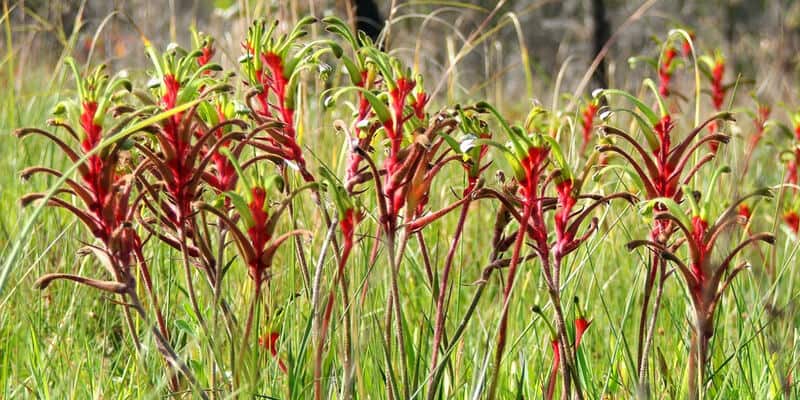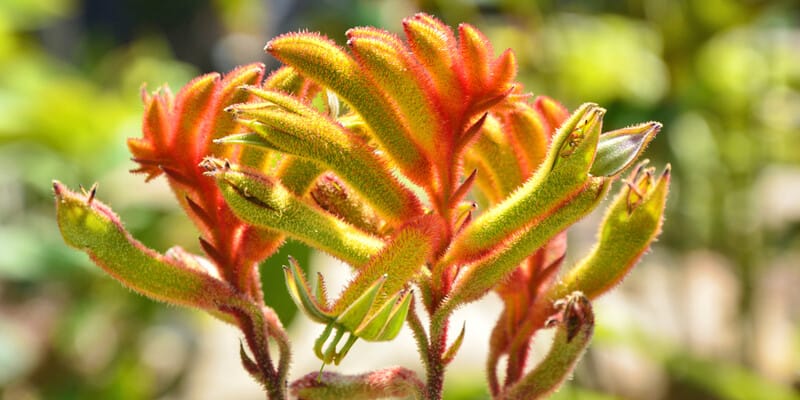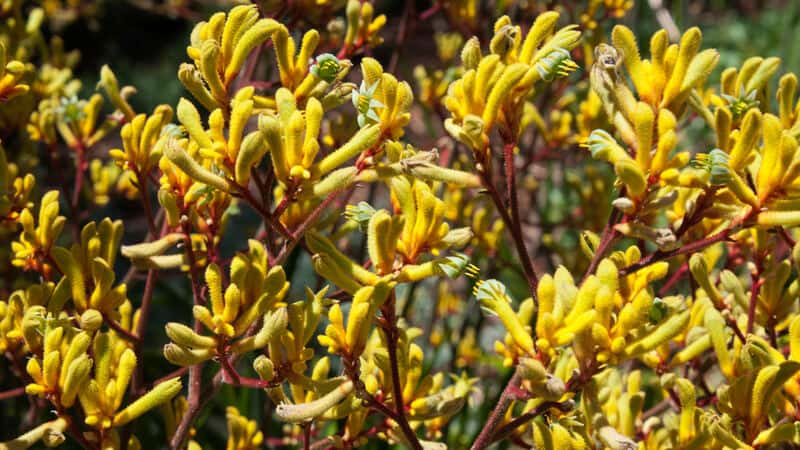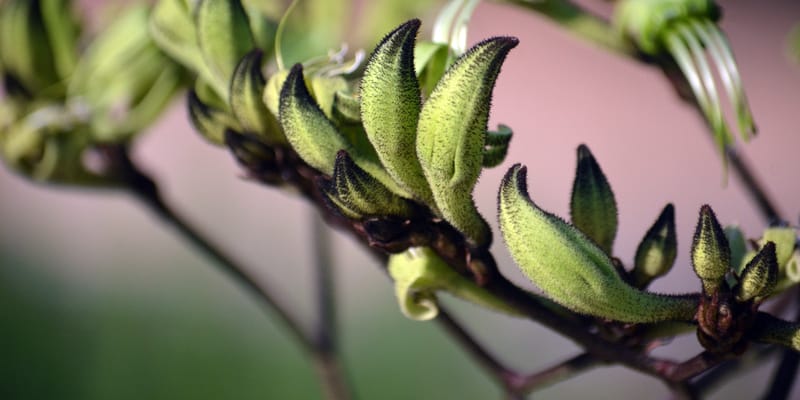If you’ve ever wanted to grow a native plant that makes a statement, go for the kangaroo paw (anigozanthos). It’s easily recognised by the signature tubular flowers that grow in rows on stalks – hence its resemblance to a kangaroo paw. The velvety blooms come in a variety of colours, from red to yellow to purple. There are other native flowers, but the kangaroo paw is truly unique.
How to care for kangaroo paws? Simple! Depending on the variety, it can grow from half a metre to 3 metres. It likes full sun and thrives in sandy, slightly acidic soil. While the kangaroo paw can tolerate drought, it prefers a moderate amount of moisture – just don’t overwater, or you could cause root rot. Also remember that kangaroo paws thrive in heat, so keep them out of the frost.
Wallaby waiting for? Here’s how to grow and care for kangaroo paw plants.
About The Kangaroo Paw Plant
The kangaroo paw (anigozanthos) is a species of flowering plant native to Australia. It’s actually a perennial herb, with leaves at ground level that rise from underground rhizomes. This means that even if you chop down to the base of the plant, the root system remains safe and can propagate again.
The kangaroo paw flowers have a unique, tubular shape, and they grow in rows that make them look paw-like. They’re very vivid, coming in shades of red and yellow, and even purple and white.
Kangaroo paws bloom in late spring and summer, and often into early autumn, adding plenty of warmth and colour to your garden. They’re great for cut flowers, so don’t be afraid of gathering a bunch to display in your home.
Growing Kangaroo Paw
Soil
Kangaroo paw grows naturally in sandy soil that’s slightly acidic, but it can tolerate a variety of soil types – just make sure the ground has good drainage. While they like somewhat moist soil, too much moisture can lead to root rot.
Lighting
The kangaroo paw plant needs at least six hours of direct sunlight, so place it somewhere it gets full sun. Even the hot afternoon sun will leave these plants unfazed. Insufficient light makes the plants go limp and can affect the growth of flowers.
Growing conditions
These native plants can take the heat – but they can’t tolerate frost. If you’re going to plant kangaroo paws, make sure to sow in spring when the weather is growing warmer. They thrive most in temperatures between 21º–30ºC, but once you start hitting the 10s, they’ll need to be brought inside.
Kangaroo paws also like dry conditions, though they can tolerate some humidity. Don’t grow them in too-humid conditions or you could cause the soil to become over-moist.
How To Grow Kangaroo Paw
Growing kangaroo paw from seed
To grow kangaroo paws from seed, you’ll need to soak the seeds in hot water for two hours. This softens the seed coat and increases your chances of germination.
Place the seeds on a seed bed or tray. Use warm, moist, and free draining starter soil. Mist the soil regularly to keep it moist.
Kangaroo paw seeds generally take up to six weeks to germinate, so be patient!
Once the kangaroo paws are established, you can transfer them to pots, or even into the ground.
Propagating kangaroo paw
You can also propagate kangaroo paws through division. Simply cut a mature plant at the roots (or check your local nursery for starter plants!), then replant in fast-draining soil. Dividing your own plants also helps encourage growth.
Kangaroo Paw Care
If you want to sit back for a bit, or head out for some fun, you can always leave your kangaroo paw care – and any other plants, too! – to professional gardeners. Otherwise, here’s how to care for your kangaroo paws so they stay healthy and thriving.
Pruning
Kangaroo paw plants respond well to heavy pruning. The underground rhizome means you can cut down the plant to about 15cm above ground level, and it’ll spring right back up. Make sure you wait until the plant has finished blooming; you don’t want to harm the existing flowers. You could even get a second, smaller bloom of flowers afterwards!
Watering
Keep soil moisture at a moderate level, since too-wet ground could cause root rot. Kangaroo paw plants are fairly drought tolerant, so you can wait until the top layer of soil has dried out before watering again.
Fertiliser
There’s no need to fertilise kangaroo paw plants, since they don’t need plant food to grow. You can add some compost or mulch during spring and summer to boost flowering, but otherwise they can chill on their own.
Common Problems
Kangaroo paws don’t have very serious pest problems, but you do want to watch for ink spot disease. If the leaves and stems start to blacken, your plants have fungus. Prune off any diseased foliage to stop the spread. And of course, make sure your plants have plenty of sun and air circulation to prevent it from developing.
Types of Kangaroo Paws
Red And Green Kangaroo Paw
This variety is endemic to Western Australia, and has long been its floral emblem. The plant blooms in its signature green and red flowers. It’s also called a Mangles kangaroo paw, and blooms between August and November.
Big Red Kangaroo Paw
This is a heartily-growing kangaroo paw variety, with large red flowers among bright green leaves. It can reach up to 2m in height and 1.5m across, and is very resilient.
Yellow Gem
Yellow Gem kangaroo paws add a great pop of colour with their yellow flowers on red stems. This plant is also very hardy, and needs little maintenance once established.
Bush Bonanza
To match its fun name, the Bush Bonanza variety has brightly-coloured pink flowers. It’s great for potting, since it rarely grows beyond 60cm in height. It also can flower anytime of the year.
Black Kangaroo Paw
If you want some really unique blooms, go for Macropidia fuliginosa, also known as black kangaroo paw. These plants feature striking black and green flowers. They’re extremely rare, and grow better in Western Australia.





